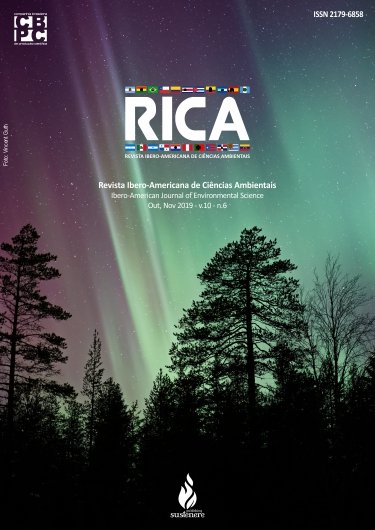Cultivation of nitrifying bacteria from submerged aerated biological filter biofilm treating sewage
DOI:
https://doi.org/10.6008/CBPC2179-6858.2019.006.0008Keywords:
Nitrosomonas, Nitrobacter, Wastewater, Dog Kennel, NMP, Pearson correlationAbstract
Nutrient removal techniques have been employed in the treatment of effluents with the inclusion of a biological step. Since nitrifying microorganisms are responsible for the transformation of nitrogen forms, the objective of this study was to detect and quantify nitrifying bacteria from the treatment of effluents from a kennel. The characterization of the effluent was performed and a correlation between the measured variables was obtained. The density of nitrifying bacteria was evaluated and from the biofilm collected in the aerated submerged biological filter, the microorganisms were cultivated, isolated and observed under an optical microscope and a scanning electron microscope. Physical-chemical analyses showed a 35% decay of ammoniacal nitrogen between the entrance and exit of the biofilter. Bacterial density demonstrated variability between ammonia (BOA) and nitrite (BON) oxidizing bacteria in the biofilter, and a higher density of BON compared to BOA in the biofilm. The pH showed a positive correlation of 72% with nitrogen forms (NHx), and a negative correlation of 81% with nitrite, and these correlations were statistically significant. From microscopic observation, nitrifying bacteria were identified from morphology. The pH can be considered as the limiting factor for nitrification, because it is related to the growth of bacteria. The occurrence of microorganisms can be verified both in the effluent and adhered to the biofilm and the genera Nitrosomonas and Nitrobacter were identified.
Downloads
Downloads
Published
Issue
Section
License
The CBPC - Companhia Brasileira de Produção Científica (Brazil CNPJ: 11.221.422/0001-03) the material rights of the published works. The rights relate to the publication of the work anywhere in the world, including rights to renewals, expansions and dissemination of the contribution, as well as other subsidiary rights. All electronically published works may subsequently be published in printed collections under the coordination of this company and / or its partners. The authors preserve the copyright, but are not allowed to publish the contribution in another medium, printed or digital, in Portuguese or in translation.









